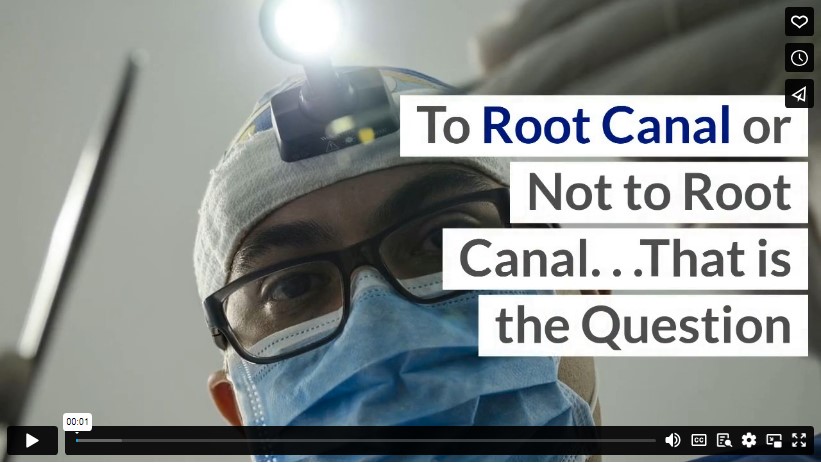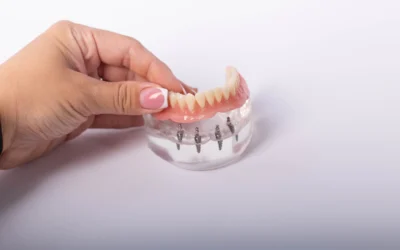Few people drift off to sleep happily with visions of root canals dancing in their heads. If anything, that vision conjures up noises that are similar to a chainsaw while some maniacal doctor yanks out an offending tooth or drills deep.
That sounds fun.
The truth is, modern root canals are a different creature than you might imagine. That said, it is still a major dental procedure and it is important to make sure that it is the best thing for you and your dental health.
Let’s start at the beginning: What is a root canal?
Your pearly whites are only a small part of the tooth. Each tooth runs deep, its roots reaching down into the gums. Those roots can get infected and inflamed, which can even lead to abscesses or severe infections at the root. None of this feels good.
A root canal allows you to keep your tooth and get rid of the inflammation and infection. There is a “pulp” inside the tooth that helps it grow and develop. Once the tooth is fully formed, it no longer relies on that pulp. So, it can be cleared out if it gets infected, leaving the outside of your tooth in place.
With modern technology and anesthesia, a root canal is a safe and relatively painless procedure, though there is some soreness afterward. Still, it is a decision to consider carefully and there are some key signs your mouth will give you if a root canal is needed.
Pain
This is generally the first indicator of any problem. Pain doesn’t mean you need to immediately schedule a root canal appointment. There are some specific kinds of pain to watch for as root canal red flags. The pain will run deep if the infection is in the pulp of the tooth. It will intensify when eating and be extremely sensitive to temperature and perhaps even touch. If the pain is sharp and stabbing, pay attention and call the dentist!
Swelling and Sores
If the problem runs deep into the root, then the gums will be inflamed as well. Gingivitis can cause swollen gums as well, but if there is an infection in one particular tooth, the swelling will be specific to the tooth that’s causing the trouble.
There might also be small sores on the gum line around the infected tooth. They’ll resemble pimples and could be mistaken for canker sores. But, canker sores don’t cause tooth pain, so if there are swelling or sores on the gums and tooth pain, that’s another signal to make the call and take a look.
Discoloration
Few people have perfectly white teeth. What we eat and drink, as well as our habits, affects our teeth. Some discoloration comes from a deeper layer. If a tooth is uncomfortable and you’ve noticed it changing color, then schedule an appointment. It could be a sign of deeper trouble.
If you are reading this and panicking because you think you might need a root canal, just take a breath. It’s going to be fine! Understanding what will happen in a root canal might eliminate some of the fear, should it be a necessary procedure.
The Procedure
Since we no longer live in the middle ages, you will be able to have anesthesia for the procedure. They will drill a small hole in the top of the tooth and remove the inflamed or infected pulp. Once the inside of the tooth is clean, it will be filled and sealed. Once that is set, you’ll return to the dentist and get a crown to protect the tooth. It’s still your beloved tooth, it’s just got a new clean inside.
The Alternative
If a root canal sounds too frightening, know that it is usually the best and safest option. The alternative is to pull the tooth. If the pulp of the root is infected, it must be removed. You can do that by drilling into it and pulling it out (root canal), or by pulling the entire tooth.
Weighing Your Options
It might seem simpler to just yank the tooth, but that carries some risks. Tooth extraction is cheaper than a root canal, but our jaws are designed to have teeth in them, and when you pull out a tooth, it affects the entire mouth. The jawbone might weaken and other teeth will shift, causing a misaligned bite and increasing the chance of losing other teeth.
A root canal preserves the tooth, but it is a different kind of tooth. In some ways, it is weaker. But, this risk is easily eliminated with a quality crown. Also, the tooth is still there. And, where there is a tooth, there is a chance of infection. It is a very low chance, but it does exist and is worth considering.
The structure of your tooth is also a factor in the decision. If the infection came on because your tooth was cracked or damaged in an accident, exposing the pulp, then pulling the tooth might be the best way to handle the problem, especially if it is an emergency dental situation.
Your dentist is your best resource for deciding the best path forward for that troublesome tooth. Gone are the days of terrifying dentists and cries from the dental chair. If a root canal is the best way forward to ease your suffering, then you’ll find it is far less frightening than you think and you will feel much better without that infection. If you have concerns, be sure to talk to your dentist before the procedure. They can help answer your questions and calm your fears.




